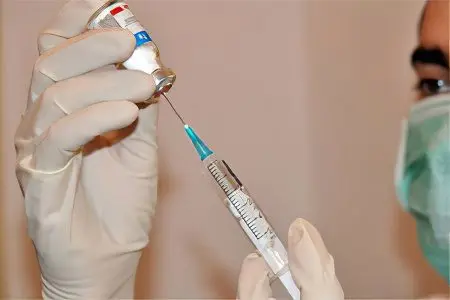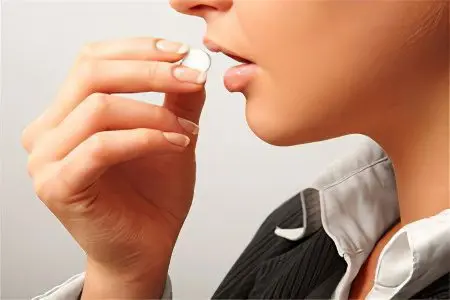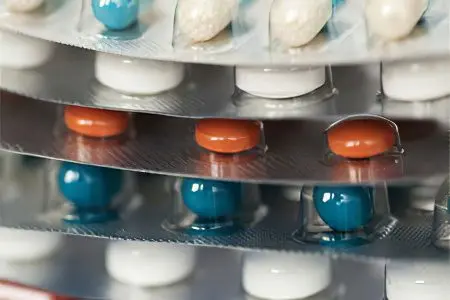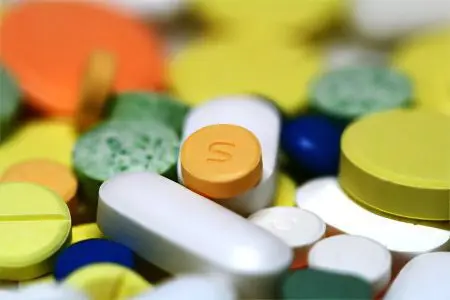Contents
Adnexitis, or salpingoophoritis, is an infectious inflammatory disease of the appendages (fallopian tubes, ovaries and ligaments). According to medical statistics, adnexitis ranks first in prevalence among all pathologies of the female reproductive system. The acute form of the disease, in the absence of proper treatment, turns into chronic adnexitis with many relapses and complications.
Treatment of acute adnexitis

Acute manifestations of adnexitis are treated in a gynecological hospital, while the patient observes bed rest. Treatment of inflammation of the appendages is carried out with antibiotics, painkillers, anti-inflammatory drugs. When choosing antibacterial agents, the doctor prefers drugs with a long half-life, using drugs from different groups.
At the beginning of treatment, preference is given to the intravenous or intramuscular method of administering antibiotics, then the oral method is practiced – therapy using tablets.
To stop the consequences of intoxication of the female body with the waste products of pathogenic bacteria, the patient is administered:
Glucose;
Protein solutions;
Reopoliglyukin;
Gemodez;
Physiological fortified solution.
To stop the pain syndrome, analgesics, suppositories with analgesic and anti-inflammatory effects, cold on the abdomen are used. After removing the symptoms of acute inflammation, the patient is prescribed physiotherapy – electrophoresis with calcium, magnesium, copper. After 2-3 months, the achieved results are consolidated by treatment in a sanatorium of the appropriate profile.
Treatment of chronic adnexitis

The treatment regimen for chronic adnexitis varies depending on what stage the disease is at – in the acute stage or in remission.
Indications for the appointment of antibacterial drugs:
Treatment of recurrence of adnexitis;
Lack of antibiotic therapy in the phase of acute adnexitis;
High risk of exacerbation of symptoms of the disease during physiotherapy.
Additionally, analgesics, suppositories to eliminate inflammation and pain, vitamins, drugs to prevent the adhesive process are prescribed.
Therapeutic procedures and activities for the treatment of chronic adnexitis:
UHF physiotherapy, amplipulse therapy, electrophoresis with iodine, zinc, magnesium;
Mud therapy and treatment with sodium chloride and arsenic waters (indicated with the simultaneous course of adnexitis and endometriosis, fibroids);
Radon and iodine-bromine baths (shown when adnexitis is combined with hyperestrogenism);
Acupuncture;
Physiotherapy;
Psychotherapy;
Diet with the exception of salty, fatty and fried foods.
To prevent exacerbations of chronic adnexitis, it is recommended to avoid hypothermia, emotional and physical overload.
List of drugs for the treatment of adnexitis

Salpingitis, or inflammation of the fallopian tubes, is very rare as an independent disease. Most often, this pathology is combined with inflammatory diseases of the uterus and ovaries or is their consequence. In exceptional cases, purulent processes in the inflamed fallopian tubes, ovaries and uterus are combined, increasing the risk of sepsis and pelvioperitonitis.
In order to prevent the transition of acute inflammation into a chronic form, the occurrence of complications such as infertility, abscess, pyosalpinx, adhesion formation, the appointment of antibacterial drugs is required immediately after the diagnosis is established.
Before starting the treatment of adnexitis, it is required to determine which infectious agent caused the inflammatory process. It can be anaerobic and gram-positive bacteria, chlamydia, mycoplasma, gonococci, streptococci. Bacterial culture of a secret taken from the cervical canal will help determine the sensitivity of the pathogen to antibiotics.
Groups of antibacterial drugs for the treatment of acute adnexitis:
Cephalosporins – Cefotaxime, Ceftriaxone, Cefoxitin;
Inhibitor-protected penicillins – Amoxicillin / Clavulanic acid, Ampicillin / Sulbactam;
Tetracycline – Doxycycline;
Inhibitor-protected cephalosporins – Cefoperazone / Sulbactam;
Macrolides – Erythromycin, Azithromycin, Roxithromycin, Clarithromycin, Spiramycin;
Fluoroquinolones – Ciprofloxacin, Ofloxacin;
Nitroimidazoles – Ornidazole, Metronidazole;
Aminoglycosides – Gentamicin;
Lincosamide – Clindamycin;
Carbapenems – Meropenem, Imipenem.
Treatment regimens for adnexitis

Therapy of salpingoophoritis is carried out according to a certain scheme. The dosage of drugs is adjusted in accordance with the age of the woman and the stage of the inflammatory process.
Options for antimicrobial regimens for the treatment of adnexitis:
Combination of ceftriaxone (2 times a day) or cefoxitin (1 time a day) with doxycycline. The course of treatment with cephalosporins lasts 48 hours or more, is canceled immediately after the improvement of the patient’s condition. Doxycycline is taken for at least 2 consecutive weeks.
If infection with a mixed pathogenic flora is suspected or in severe adnexitis, Metronidazole is added to the two drugs from the previous scheme.
Stepwise therapy – Clindamycin IV every 8 hours in combination with Gentamicin IV or IM 3 times a day is replaced every other day with oral doxycycline (2 times a day) or Clindamycin (4 times a day) in combination with Metronidazole. The course of treatment lasts 14 days.
Step therapy, scheme 2 – injections of inhibitor-protected penicillins (Ampicillin / Sulbactam) IV 4 times a day are replaced by oral administration of Doxycycline.
Ceftriaxone or Cefotaxime in combination with Metronidazole.
Combination of protected penicillins (Amoxicillin / Clavulanate or Ampicillin / Sulbactam) or protected cephalosporins (Cefoperazone / Sulbactam) with antibacterial drugs from the macrolide group (Spiramycin, Erythromycin, Clarithromycin).
The combination of Metronidazole + cephalosporins with drugs of the macrolide class (used for intolerance to doxycycline).
Fluoroquinolone therapy – Metronidazole in combination with Ofloxacin or Ciprofloxacin plus Doxycycline or a macrolide drug. Used for patients over 18 years of age.
Treatment of a severe form of adnexitis is a combination of carbapenems (Imipenem or Meropenem) with Doxycycline or antibacterial agents from the macrolide group.
Treatment of adnexitis caused by gonococcus – Ceftriaxone (or Cefoxitin) + Metronidazole + Doxycycline in combination with Probenecid, which increases the concentration of antibacterial drugs in the blood plasma. Cephalosporin and Probenecid are taken once, the course of treatment with Metronidazole and Doxycycline lasts 2 weeks. If there are contraindications to the use of cephalosporins in a gonococcal infecting agent, Azithromycin is prescribed.
Therapy of tubo-ovarian abscess – Clindamycin is included in the treatment regimen.
Treatment of adnexitis with minimal symptoms is carried out with oral preparations that have high bioavailability:
Azithromycin (1000 mg) at the beginning of treatment, replacing it with clindamycin.
Preparations from the group of penicillins (Amoxiclav, Augmentin, Flemoklav) + Doxycycline (replaced by macrolides in case of intolerance).
Fluoroquinolones (Ciprofloxacin) + macrolides (Rovamycin, Clarithromycin) + Metronidazole.
Ofloxacin in combination with Ornidazole.
Fluoroquinolones (Ciprofloxacin, Ofloxacin) + Doxycycline.
Ciprofloxacin + Doxycycline + Clindamycin.
Treatment of adnexitis caused by chlamydia – Doxycycline, or Ofloxacin, or macrolides (Josamycin, Azithromycin).
Treatment of adnexitis caused by gonococcus – cephalosporins or macrolides (Ceftriaxone, Cefotaxime, Azithromycin), in the presence of contraindications, are replaced by fluoroquinolones (Ciprofloxacin).
Treatment of adnexitis caused by mycoplasma – Doxycycline, Azithromycin, Moxifloxacin, Ofloxacin, Josamycin.
Why antibiotics for adnexitis are required?

More than 20% of women who have undergone adnexitis suffer from infertility in the future, they are 10 times more likely to have an ectopic pregnancy. The consequence of the chronic form of the disease is the formation of adhesions in the pelvic organs, disrupting the blood supply, causing congestion. Pain syndrome becomes an obstacle to a full sexual life.
To avoid such complications, you should consult a doctor to prescribe a treatment regimen for adnexitis. Independent use of antibacterial agents is unacceptable, as well as the use of candles. This form of drugs with analgesic and anti-inflammatory effects is prescribed as an adjunct to antimicrobial therapy.
Purpose of using candles:
Elimination of pain syndrome;
Decrease in temperature;
Relief of inflammation;
Prevention of the formation of adhesions.
The minimum course of treatment for adnexitis is 10-14 days. If STDs are suspected, a thorough examination and simultaneous treatment of the woman and her sexual partner is required.
Treatment of adnexitis in pregnant women

When treating salpingo-oophoritis during pregnancy, the following groups of drugs are excluded from the treatment regimen:
Tetracycline – Doxycycline;
Aminoglycosides – Gentamicin;
Lincosamide – Clindamycin;
Fluoroquinolones – Ciprofloxacin, Ofloxacin.
Metronidazole should not be taken during the first trimester of pregnancy. In the second and third trimesters, its use is possible only after a balanced decision by the attending physician. If a pregnant woman has adnexitis provoked by chlamydia, it is treated with Erythromycin, Azithromycin, Josamycin, Spiromycin. As an alternative, Amoxicillin is prescribed.
Indications for surgical treatment of adnexitis

In what cases is surgical treatment of adnexitis performed – urgent indications:
Lack of effect from treatment with medicines and other methods;
Anatomical changes in organs and tissues against the background of chronic adnexitis;
The formation of purulent foci (tubo-ovarian abscess, pyosalpinx, ovarian abscess);
Frequent recurrences of chronic adnexitis against the background of the lack of effect of conservative treatment;
The formation of an extensive adhesive process, accompanied by a pronounced pain syndrome;
The combination of chronic adnexitis with endometriosis of the ovaries and fallopian tubes;
The combination of adnexitis with a cyst or tumor of the ovary.
At the initial stage of acute adnexitis, it is possible to perform diagnostic laparoscopy with antiseptic treatment of the abdominal cavity with solutions of antibiotics and antiseptics. The volume of surgical intervention in the later stages of the course of adnexitis depends on the presence or absence of purulent inclusions, cysts or tumors of the ovary, uterine fibroids, adhesions.
You need to know that even an impeccably performed operation to restore the patency of the fallopian tubes and eliminate adhesions does not guarantee reproductive health.









